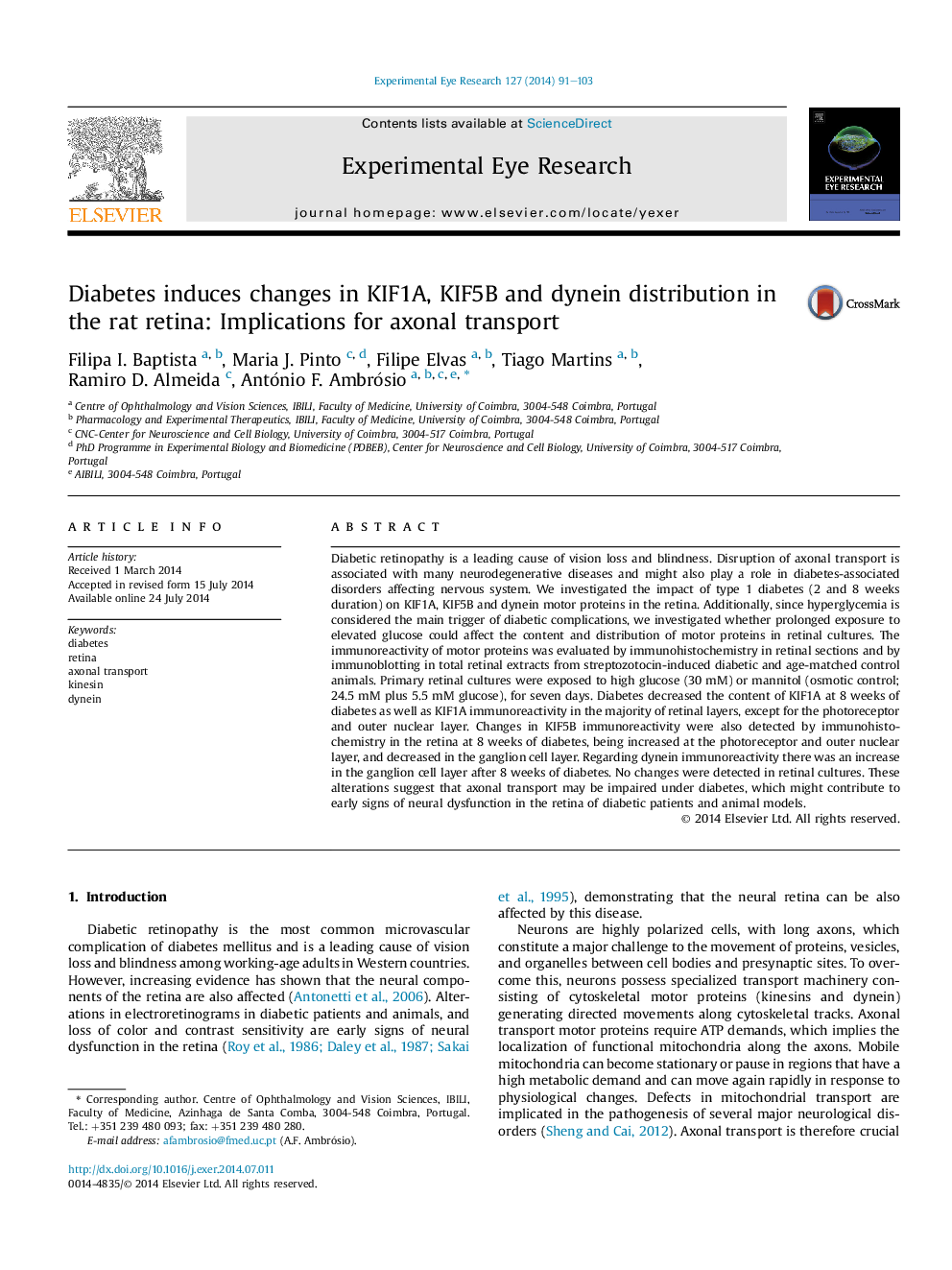| کد مقاله | کد نشریه | سال انتشار | مقاله انگلیسی | نسخه تمام متن |
|---|---|---|---|---|
| 6196790 | 1602595 | 2014 | 13 صفحه PDF | دانلود رایگان |

- Kinesin and dynein motor proteins are altered in the retinas of diabetic rats.
- High glucose per se did not lead to changes in motor proteins in retinal neurons.
- Other factors, like inflammation, may contribute for the alterations in motor proteins.
Diabetic retinopathy is a leading cause of vision loss and blindness. Disruption of axonal transport is associated with many neurodegenerative diseases and might also play a role in diabetes-associated disorders affecting nervous system. We investigated the impact of type 1 diabetes (2 and 8 weeks duration) on KIF1A, KIF5B and dynein motor proteins in the retina. Additionally, since hyperglycemia is considered the main trigger of diabetic complications, we investigated whether prolonged exposure to elevated glucose could affect the content and distribution of motor proteins in retinal cultures. The immunoreactivity of motor proteins was evaluated by immunohistochemistry in retinal sections and by immunoblotting in total retinal extracts from streptozotocin-induced diabetic and age-matched control animals. Primary retinal cultures were exposed to high glucose (30Â mM) or mannitol (osmotic control; 24.5Â mM plus 5.5Â mM glucose), for seven days. Diabetes decreased the content of KIF1A at 8 weeks of diabetes as well as KIF1A immunoreactivity in the majority of retinal layers, except for the photoreceptor and outer nuclear layer. Changes in KIF5B immunoreactivity were also detected by immunohistochemistry in the retina at 8 weeks of diabetes, being increased at the photoreceptor and outer nuclear layer, and decreased in the ganglion cell layer. Regarding dynein immunoreactivity there was an increase in the ganglion cell layer after 8 weeks of diabetes. No changes were detected in retinal cultures. These alterations suggest that axonal transport may be impaired under diabetes, which might contribute to early signs of neural dysfunction in the retina of diabetic patients and animal models.
Journal: Experimental Eye Research - Volume 127, October 2014, Pages 91-103